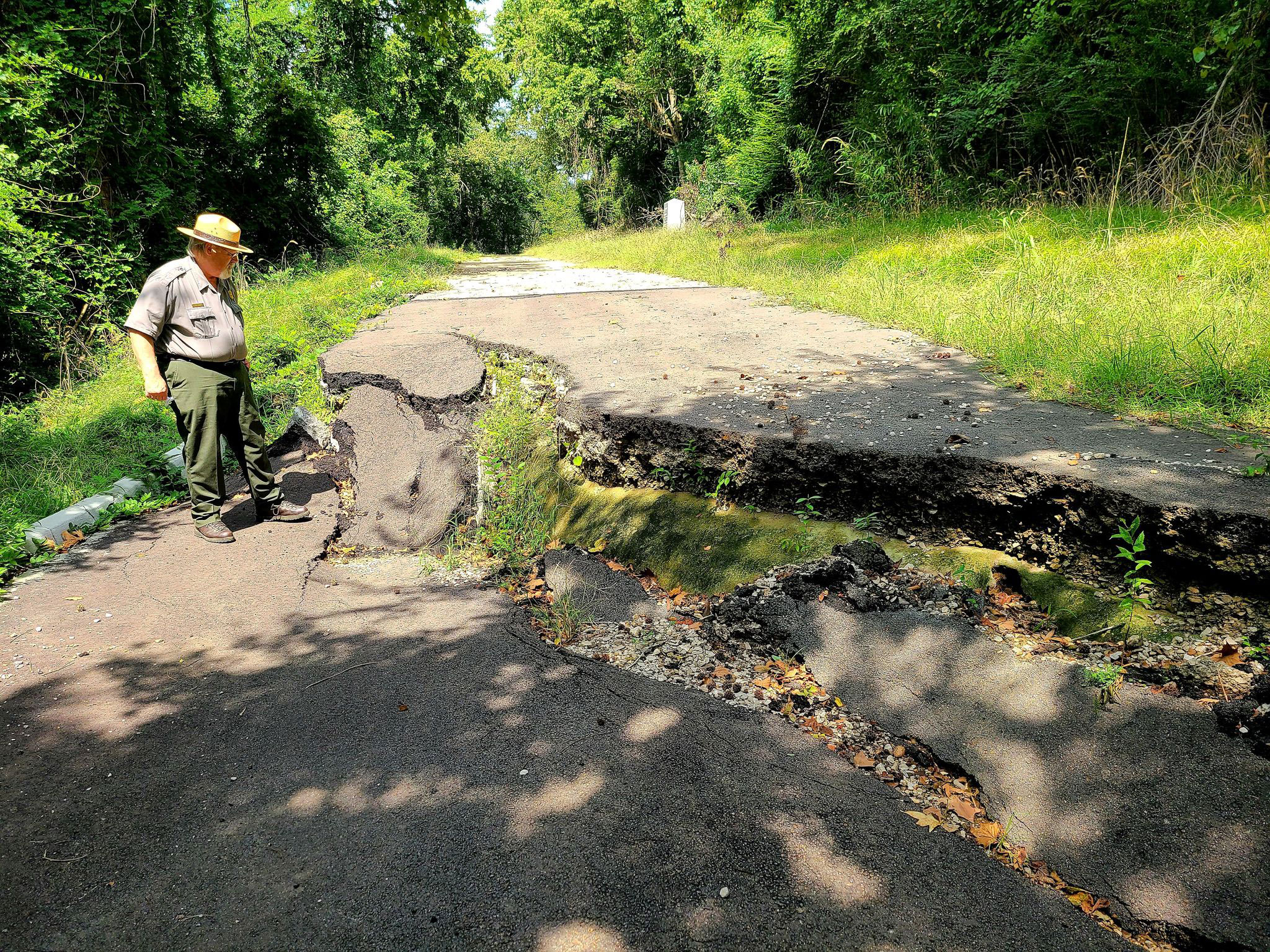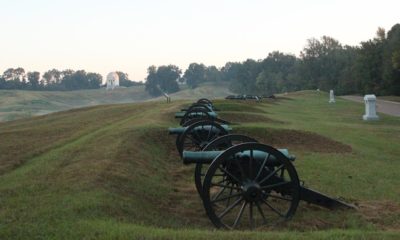News
Superintendent Bill Justice: ‘Five years or so’ for military park to fully reopen

In an exclusive interview with the Vicksburg Daily News, Vicksburg National Military Park Superintendent Bill Justice estimated that the park will not fully reopen for “probably five years or so.”
It will take that long “until we get to the point of actually doing the work or actually seeing work done on these big portions of damage,” Justice said, sounding exasperated.
Record heavy rainfall earlier this year caused roadways to buckle and hillsides to give way inside the park, and about 30% of the park remains inaccessible to visitors.
“There are 17 locations in the park where we have erosion or some kind of damage” Justice said. One of the areas was at the National Cemetery, a section of the park where Civil War soldiers were laid to rest.
“The area of the collapse was U.S. Colored Troops aged 16 to 45,” he said. “So far we’ve had archaeologist exhume and recover 10 sets of remains.”
The U.S. Army Corps of Engineers is one of the organizations helping to stabilize the area.
Some 17,000 soldiers and veterans are buried in the park, and of them, 10,000 are unknowns, Justice said, not an unusual occurrence in a war where tens of thousands could be wounded and die in a single day’s battle. Gettysburg resulted in 51,000 casualties — killed, wounded, captured or missing — over three days, and the Siege of Vicksburg ended with more than 37,000.
“We are stewards of the remains of soldiers and their last resting place,” Justice said.
He showed the Vicksburg Daily News areas of the park that are damaged and explained how we got here along with the process to getting it fixed.
“The heavy rains we received in the first part of 2020 were the final straw,” Justice said as we stood on the road just beyond Thayers Pass. The road was built between 1900-1910 before the automobile became a common feature on the American landscape. “This road was built for carriages and wagons and things like that. Even early motor vehicles were capable of doing the road. This road wasn’t paved until much later. Nowadays we drive 50,000-pound buses across these roads.”
The rains this year were part of 20 years of record rainfall for the area from 2000 to 2020. The most rainfall before that was 1980 to 2000. This area has been getting drenched for decades now and this spring, roads and land finally gave way.
The next big step in the park’s recovery effort is a survey of all its roads.
“We know the condition of the roads in the rest of the park, but we are probably going to have to do something different,” Justice said. “We don’t know yet, but that is why we are doing the survey.
“We can figure out where we are going from there.”
See a typo? Report it here.












